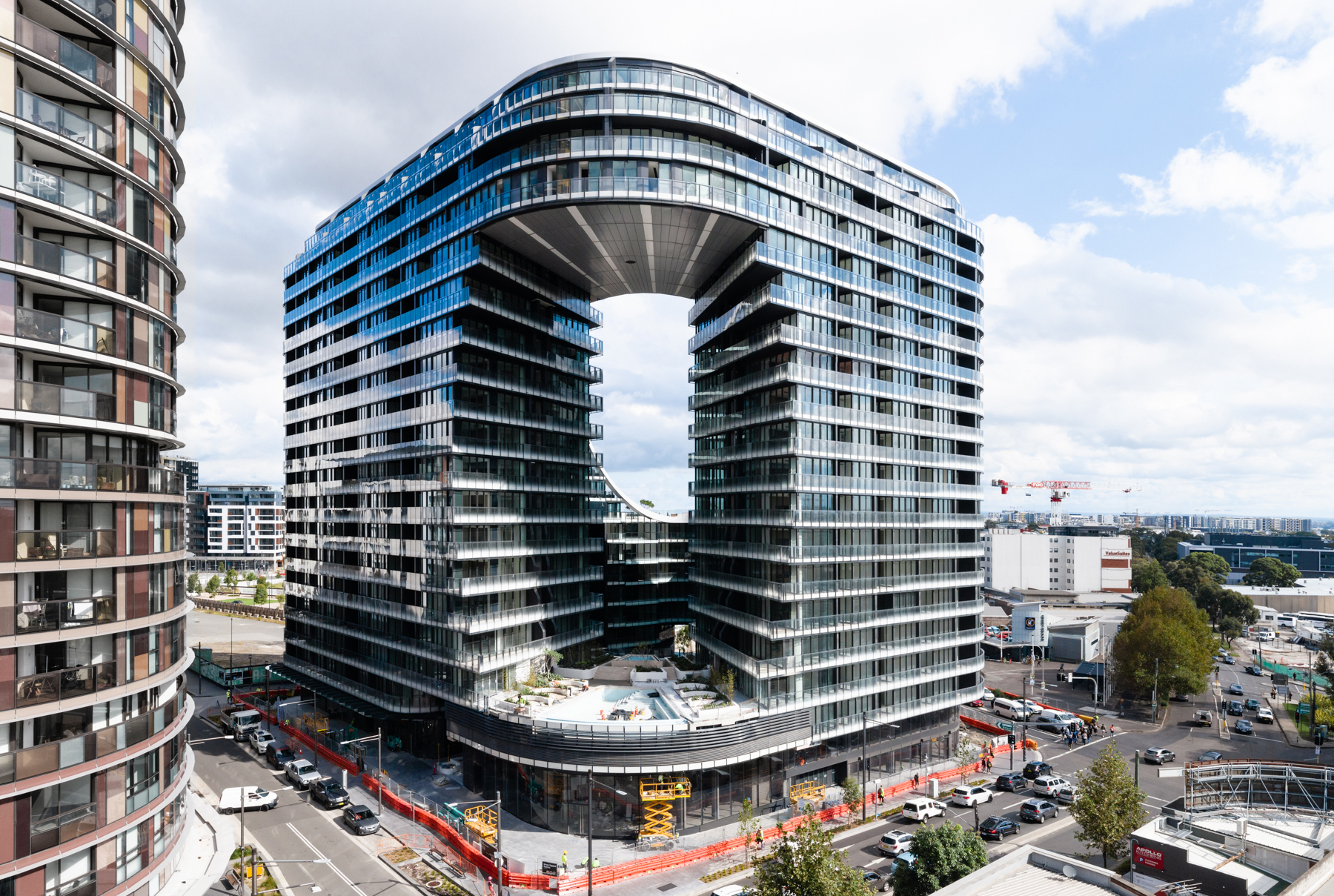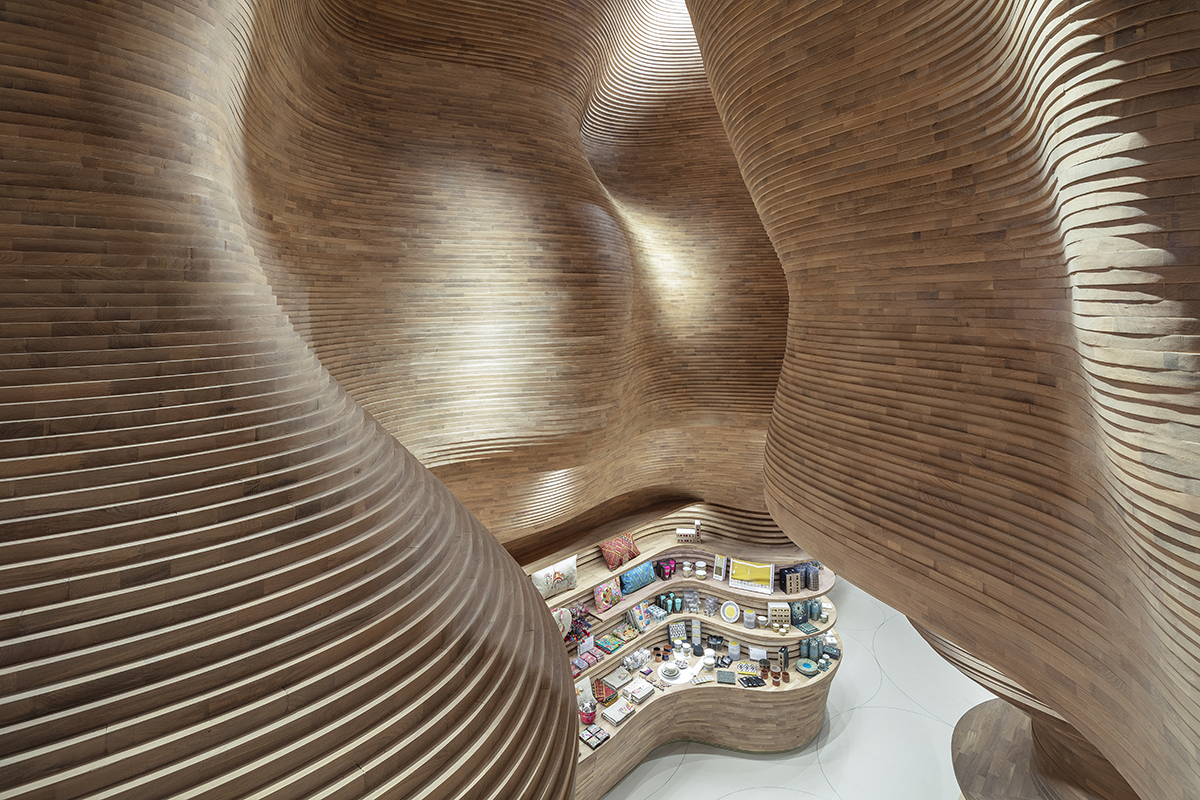Interview: Architect Koichi Takada
“We want to make Sydney the greenest city in the world.”
“We want to make Sydney the greenest city in the world.”
Architect Koichi Takada has never taken the easy option.
Born in Tokyo, at 16 he held dreams of pursuing life as a fashion designer or an artist – aimed at realising a firm desire to live in Manhattan.
He eventually came to architecture – a combination of art and engineering – as a pathway to appease such wants and those of his parents.
It didn’t quite work out – his father offering an easy life and generous role in the family engineering business so long as he remained in Tokyo.
Takada instead chose New York.
Cut to now and the 48-year-old is a force within global architecture, having set up an eponymous Australian-based firm while securing various awards across projects that have transformed urban landscapes here as well as in Asia, America, the Middle East and beyond.
Kanebridge News: Most people would take the path of least resistance – why were you so set on going it alone and moving to New York?
KT: This was definitely a leap of faith. I had this gut feeling that I’m going to survive there, that somehow everything would work out including communications [a language barrier] and making friends – you know Japanese people are very homogenous and very singular, and I’d thrown myself into this melting pot. But it had been a dream of mine.
KN: Did first impressions of the city stack up?
KT: When I arrived my first impression was just disbelief – and the way you come out of the Lincoln Tunnel, I was just,‘wow’. But it was overwhelming, it was noisy and very competitive and cold and I didn’t get the pampering I had with my parents in Japan. I had sold everything to be there and I got sick of it.
RR: You eventually left New York to study in London, how did those times influence you and your work?
KN: After leaving New York, to continue my studies at the AA [Architectural Association School of Architecture] I met and learned from the likes of Zaha Hadid and Rem Koolhas, and that’s where I really learnt to push the boundaries, and create the point of difference, the uniqueness within this monotonous repetition of all this regulation … And the cultural component is definitely an important part too. When I was in New York, my favourite part was going to Central Park. And the same in London – I craved breathing space. I discovered a feeling that I connected with when in Japan, because nature is respected and there’s an effort to try and blend in [with nature] and find harmony.

KN: Nature is a central part of much of your work.
KT: Yeah. With Infinity [Sydney’s Infinity Tower], when we were competing for the project we were given the volumes, but I thought it would actually overshadow the courtyard which was meant for public use. I thought to myself, ‘why would you create a courtyard that doesn’t receive any daylight?’ So, we opened a hole to let the light in. It’s very simple, but then all of a sudden you have a breeze, light and a way to interact with nature.
KN: Why did you settle in Sydney?
KT: When I moved to Sydney in 1997, I just instantly felt something wonderful about the city, and now I’ve been here more than 20 years. I call it my home. It’s city and nature trying to balance. It’s one of the best cities in the world.
KN: Do you feel your style of melding nature and urban living was a natural fit for Sydney?
KT: Yeah, I think our product is very Sydney, it’s definitely not New York. Definitely not London. Definitely not Tokyo. But also fits what we want to make Sydney – the greenest [plant-filled] city in the world.
KN: The ‘greening’ of cities by architects and urban planners is imperative as we move forward.
KT: For the next generation of architects, they’re very much part of this and have massive challenges to bring awareness to climate change – though it’s also very a globalised challenge for everyone.
KN: Well before Infinity Tower you were designing restaurants in Sydney’s suburbs – and then you went from, say, Sushi Train Maroubra, to Qatar’s Natural Museum. How much pressure came with such a high-profile role?
KT: Well, it was the best project in the world. And yeah, I did feel extra pressure. I think as an architect when you get a sense of freedom and liberation it turns into confidence, but in this instance, you are against all the greats, like Jean Nouvel, and I thought look who we are against, I’m no one.

KN: You’re quite the sartorial gent – fair to say fashion is a firm creative outlet away from architecture?
KT: Yes, definitely, and I remember seeing Alexander Wang, who I’ve come to admire. You know we went to a grand opening party for Qatar and what I noticed is that I, naively followed the dress code, and these guys just did their own thing. It’s much more interesting than architecture.
KN: Seeing such appealed to the rule-breaker within?
KT: I wish I had figured it out when I was 18 in New York, and I’m not saying break every rule, but growing up in Japan, everything is telling you to conform. But it’s ok to think outside the box, to push a little bit. But it’s not so much his [Wang’s] work, it’s his spirit I’m inspired by. I know what it’s like being Asian in Manhattan, let’s just call it racist, or political, or whatever, but to be in that position and with that creativity and to prevail – I suddenly looked up to him.
What a quarter-million dollars gets you in the western capital.
Alexandre de Betak and his wife are focusing on their most personal project yet.
As Paris makes its final preparations for the Olympic games, its residents are busy with their own—packing their suitcases, confirming their reservations, and getting out of town.
Worried about the hordes of crowds and overall chaos the Olympics could bring, Parisians are fleeing the city in droves and inundating resort cities around the country. Hotels and holiday rentals in some of France’s most popular vacation destinations—from the French Riviera in the south to the beaches of Normandy in the north—say they are expecting massive crowds this year in advance of the Olympics. The games will run from July 26-Aug. 1.
“It’s already a major holiday season for us, and beyond that, we have the Olympics,” says Stéphane Personeni, general manager of the Lily of the Valley hotel in Saint Tropez. “People began booking early this year.”
Personeni’s hotel typically has no issues filling its rooms each summer—by May of each year, the luxury hotel typically finds itself completely booked out for the months of July and August. But this year, the 53-room hotel began filling up for summer reservations in February.
“We told our regular guests that everything—hotels, apartments, villas—are going to be hard to find this summer,” Personeni says. His neighbours around Saint Tropez say they’re similarly booked up.
As of March, the online marketplace Gens de Confiance (“Trusted People”), saw a 50% increase in reservations from Parisians seeking vacation rentals outside the capital during the Olympics.
Already, August is a popular vacation time for the French. With a minimum of five weeks of vacation mandated by law, many decide to take the entire month off, renting out villas in beachside destinations for longer periods.
But beyond the typical August travel, the Olympics are having a real impact, says Bertille Marchal, a spokesperson for Gens de Confiance.
“We’ve seen nearly three times more reservations for the dates of the Olympics than the following two weeks,” Marchal says. “The increase is definitely linked to the Olympic Games.”

According to the site, the most sought-out vacation destinations are Morbihan and Loire-Atlantique, a seaside region in the northwest; le Var, a coastal area within the southeast of France along the Côte d’Azur; and the island of Corsica in the Mediterranean.
Meanwhile, the Olympics haven’t necessarily been a boon to foreign tourism in the country. Many tourists who might have otherwise come to France are avoiding it this year in favour of other European capitals. In Paris, demand for stays at high-end hotels has collapsed, with bookings down 50% in July compared to last year, according to UMIH Prestige, which represents hotels charging at least €800 ($865) a night for rooms.
Earlier this year, high-end restaurants and concierges said the Olympics might even be an opportunity to score a hard-get-seat at the city’s fine dining.
In the Occitanie region in southwest France, the overall number of reservations this summer hasn’t changed much from last year, says Vincent Gare, president of the regional tourism committee there.
“But looking further at the numbers, we do see an increase in the clientele coming from the Paris region,” Gare told Le Figaro, noting that the increase in reservations has fallen directly on the dates of the Olympic games.
Michel Barré, a retiree living in Paris’s Le Marais neighbourhood, is one of those opting for the beach rather than the opening ceremony. In January, he booked a stay in Normandy for two weeks.
“Even though it’s a major European capital, Paris is still a small city—it’s a massive effort to host all of these events,” Barré says. “The Olympics are going to be a mess.”
More than anything, he just wants some calm after an event-filled summer in Paris, which just before the Olympics experienced the drama of a snap election called by Macron.
“It’s been a hectic summer here,” he says.

Parisians—Barré included—feel that the city, by over-catering to its tourists, is driving out many residents.
Parts of the Seine—usually one of the most popular summertime hangout spots —have been closed off for weeks as the city installs bleachers and Olympics signage. In certain neighbourhoods, residents will need to scan a QR code with police to access their own apartments. And from the Olympics to Sept. 8, Paris is nearly doubling the price of transit tickets from €2.15 to €4 per ride.
The city’s clear willingness to capitalise on its tourists has motivated some residents to do the same. In March, the number of active Airbnb listings in Paris reached an all-time high as hosts rushed to list their apartments. Listings grew 40% from the same time last year, according to the company.
With their regular clients taking off, Parisian restaurants and merchants are complaining that business is down.
“Are there any Parisians left in Paris?” Alaine Fontaine, president of the restaurant industry association, told the radio station Franceinfo on Sunday. “For the last three weeks, there haven’t been any here.”
Still, for all the talk of those leaving, there are plenty who have decided to stick around.
Jay Swanson, an American expat and YouTuber, can’t imagine leaving during the Olympics—he secured his tickets to see ping pong and volleyball last year. He’s also less concerned about the crowds and road closures than others, having just put together a series of videos explaining how to navigate Paris during the games.
“It’s been 100 years since the Games came to Paris; when else will we get a chance to host the world like this?” Swanson says. “So many Parisians are leaving and tourism is down, so not only will it be quiet but the only people left will be here for a party.”